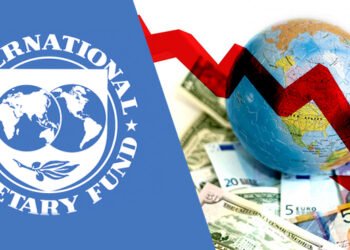Ghana’s battle with inflation has taken a remarkable turn as the year-on-year inflation rate for September 2025 plummeted to 9.4%, down from 11.5% in August 2025.
This significant decline, revealed by the Ghana Statistical Service (GSS), marks the lowest level since August 2021 and represents the ninth consecutive month of decline.
For the first time in four years, Ghana is experiencing single-digit inflation, a milestone that signals economic resilience and the effectiveness of recent policy interventions.
Government Statistician, Dr. Alhassan Iddrisu, emphasized that this development reflects a sustained easing of price pressures that had plagued households and businesses in recent years. “The underlying forces driving inflation are weakening, and this suggests a stronger path towards macroeconomic stability,” he stated.
Food and Non-Food Prices See Relief
One of the most notable shifts contributing to the inflation decline came from food inflation, which dropped to 11.0% in September, down from 14.8% in August 2025. With food prices forming a substantial share of household spending, this decline offers direct relief to millions of Ghanaian families.
On the other hand, non-food inflation also experienced a moderate decline, falling to 8.2% in September compared to 8.7% in August. This indicates that price pressures across both essential commodities and non-essential items are easing, reinforcing hopes that consumer purchasing power will gradually improve.
Breaking down the data further, the GSS highlighted contrasting trends between locally produced and imported goods. Inflation for locally produced items fell to 10.1%, down from 12.2% in August. Meanwhile, imported goods recorded a steeper drop, falling to 7.4% in September from 9.5% in August 2025.
This suggests that the easing of global supply chain pressures, coupled with the relative stability of the local currency, has begun to translate into lower costs for imported products. It also points to a more balanced price environment, which could boost consumer confidence in the domestic market.
Regional Inflation Disparities
Despite the national success story, regional disparities in inflation remain stark. The North East Region posted the highest inflation rate at a striking 20.1%, more than double the national average of 9.4%. This underlines persistent challenges in certain parts of the country where logistical constraints, market inefficiencies, and limited supply chain access continue to push prices upward.
On the other end of the spectrum, the Bono East Region recorded the lowest inflation at just 1.2%, highlighting significant variation in cost-of-living trends across Ghana’s regions.
Exceeding Government’s Targets
The decline in September inflation has not only delivered relief to consumers but also means that Ghana has already surpassed its full-year inflation target. This milestone reflects the effectiveness of monetary tightening measures, fiscal discipline, and improved foreign exchange stability in anchoring prices.
For policymakers, this achievement provides breathing space to sustain reforms without excessive pressure from rising inflation. For households and businesses, it translates into stability in planning, reduced uncertainty, and improved confidence as they look toward the final quarter of the year.
Implications for Monetary Policy and Exchange Rate
The sharp decline in inflation strengthens the case for monetary policy stability. With inflation under control, the Bank of Ghana may adopt a more measured approach to interest rate adjustments, balancing the need to support growth with the goal of maintaining stability.
Furthermore, analysts believe that a sustained period of single-digit inflation will enhance exchange rate resilience, boost investor confidence, and reduce speculative attacks on the cedi. As price pressures ease, Ghana may also see improved capital inflows and a stronger investment climate.
For ordinary Ghanaians, the drop in inflation is more than just a statistic—it represents affordable prices, greater purchasing power, and reduced cost of living pressures. Businesses, particularly SMEs, will also benefit from lower input costs, making them more competitive in both local and regional markets.
Economists caution, however, that sustaining this progress will require continued vigilance. Supply chain disruptions, global energy prices, and regional disparities could still pose risks. Nonetheless, September’s inflation report is a powerful signal that Ghana is firmly on the road to macroeconomic recovery.
A Positive Outlook Ahead
Ghana’s inflation decline to 9.4% in September 2025 is a defining economic milestone, marking the lowest rate in four years and the first single-digit achievement since 2021. With food and non-food inflation easing, imported goods stabilizing, and government targets surpassed, the development is a cause for optimism.
While challenges remain—particularly in high-inflation regions—the trend offers renewed hope for households, businesses, and policymakers. As Ghana enters the final quarter of the year, the focus will be on sustaining this positive trajectory to solidify gains in macroeconomic stability, consumer confidence, and long-term growth.
READ ALSO: Fan Milk Sweetens Market with 1.13% Surge Despite GSE’s Bleak Turnover Drop























